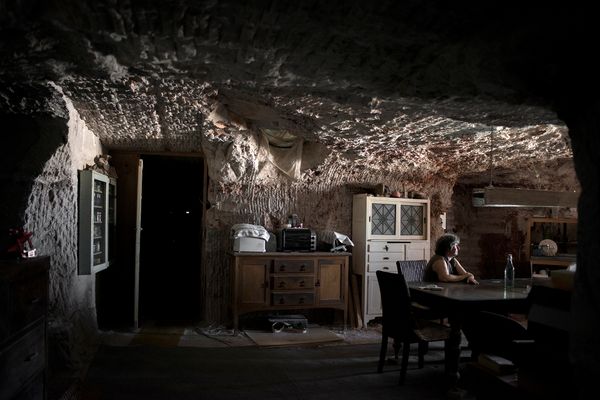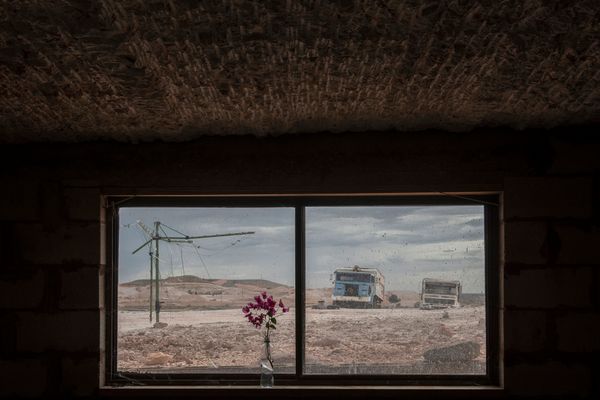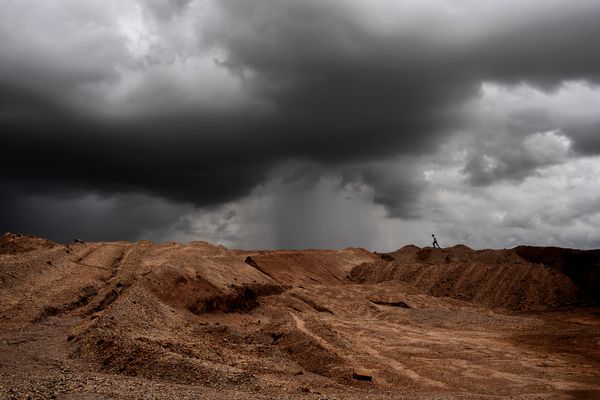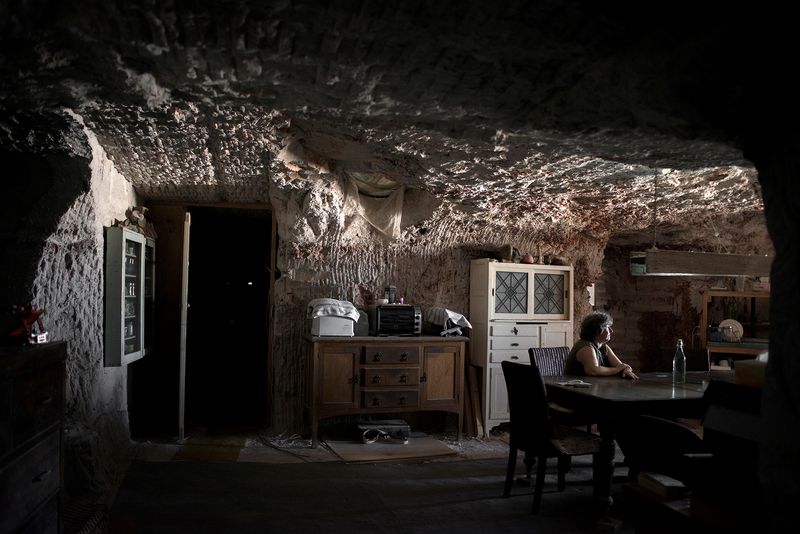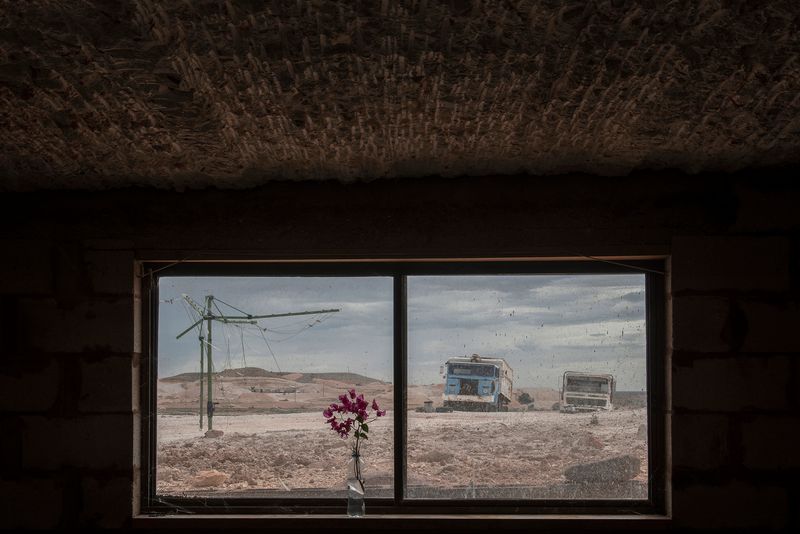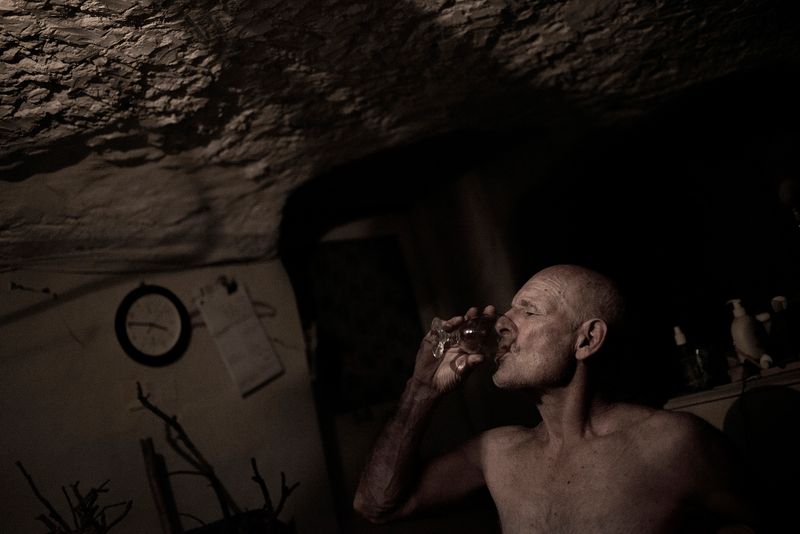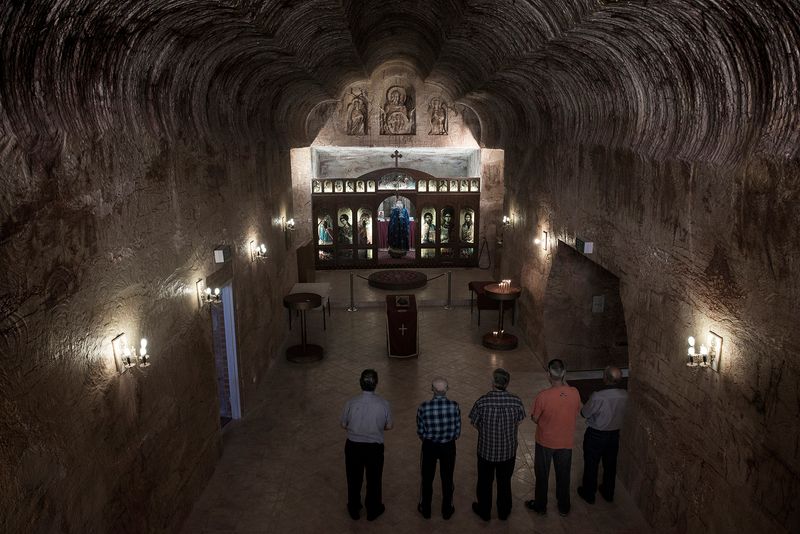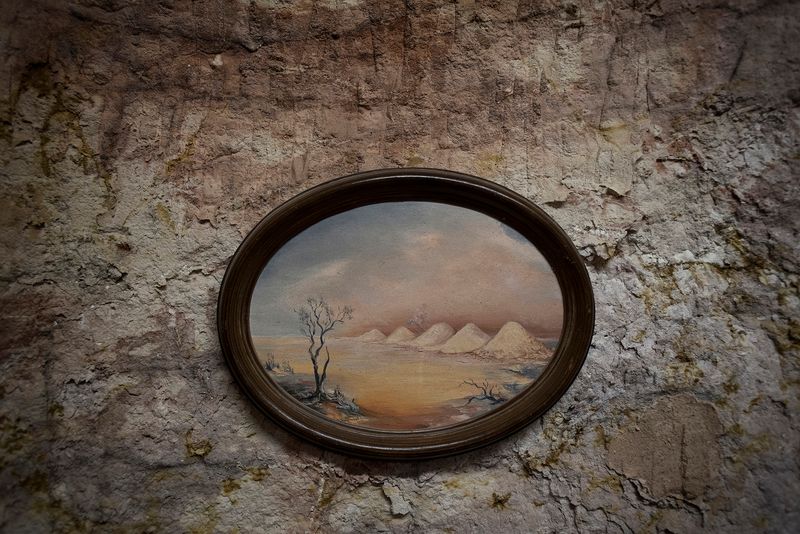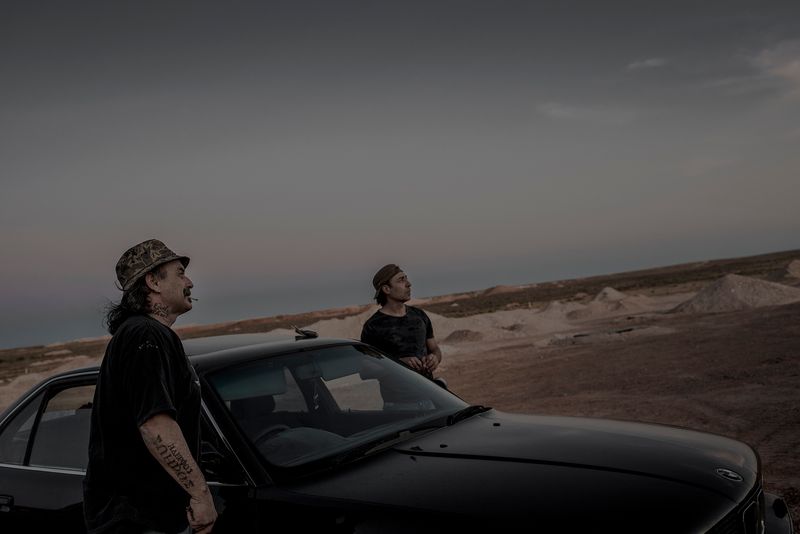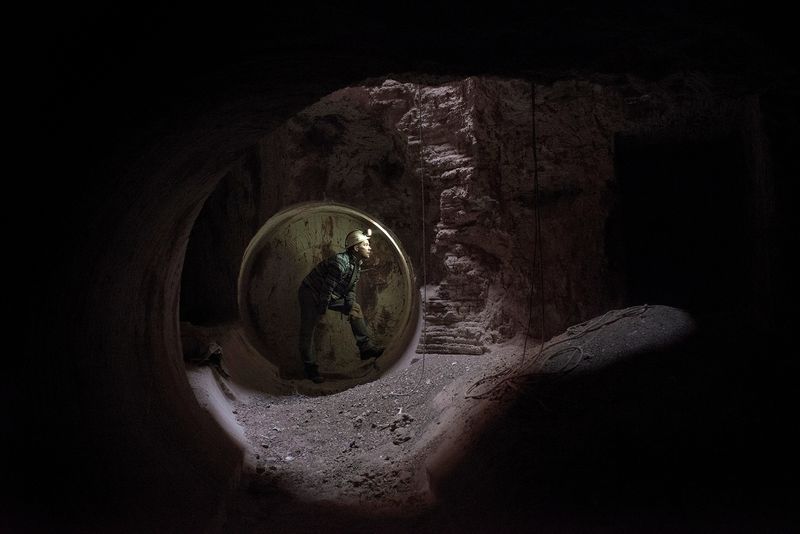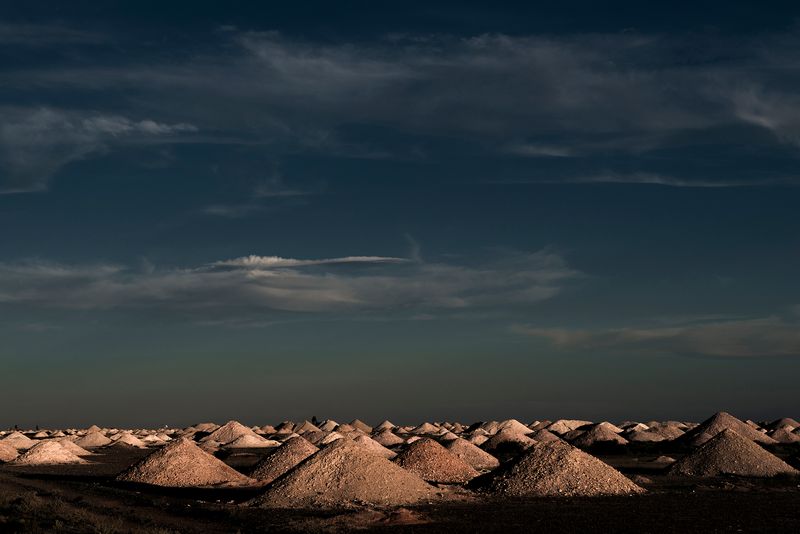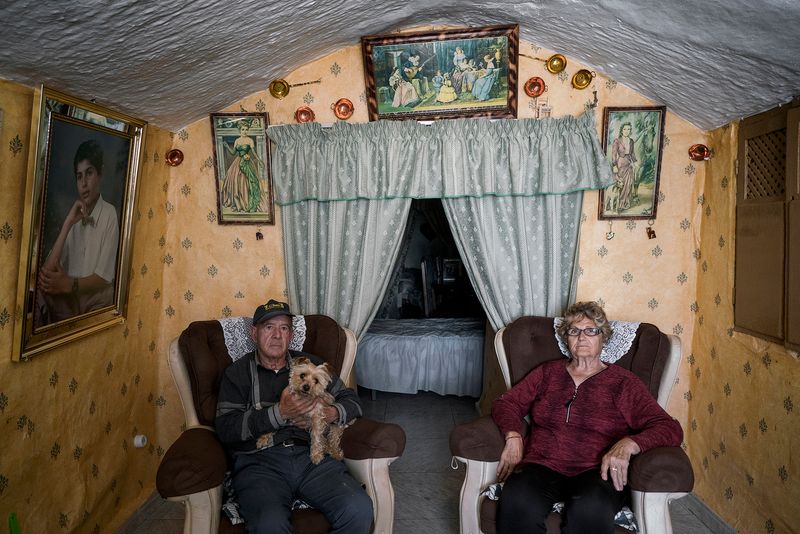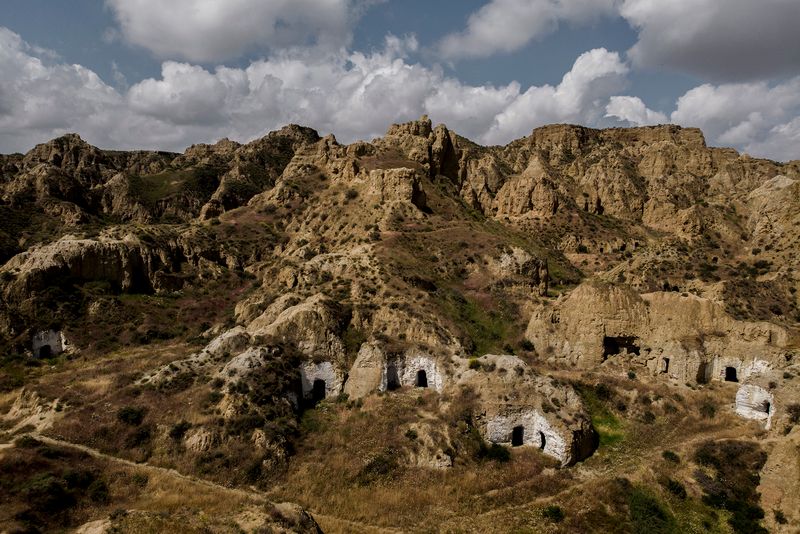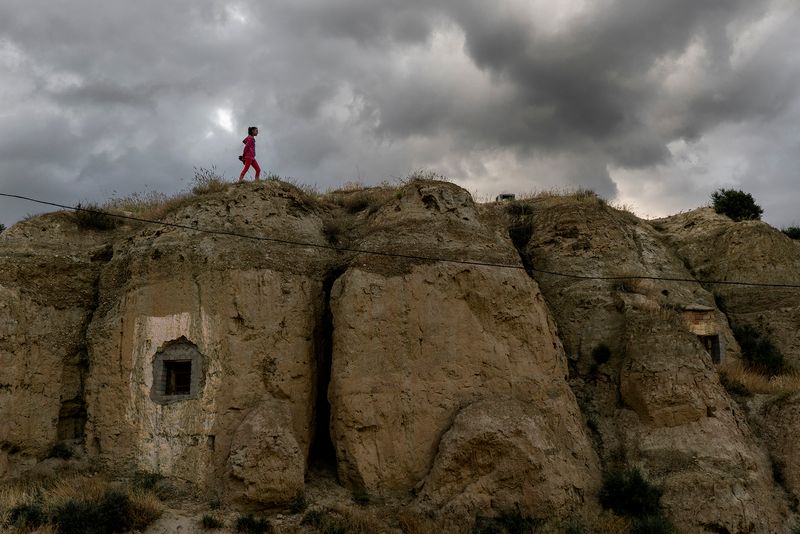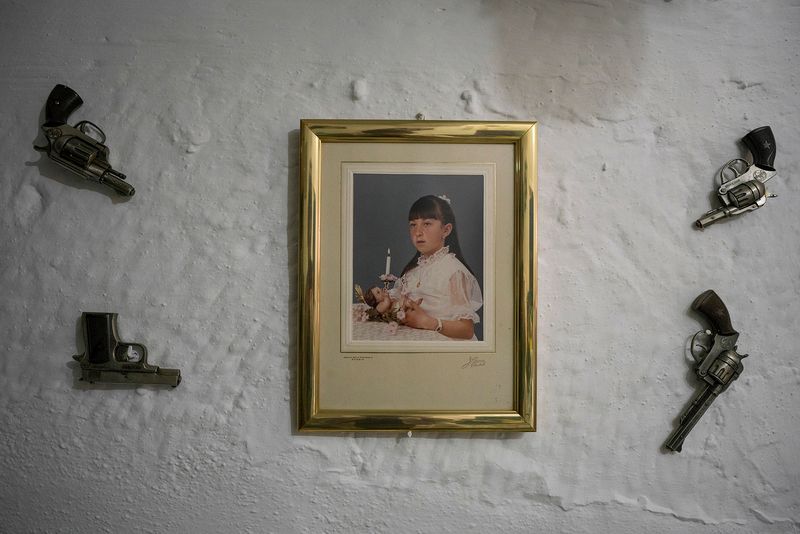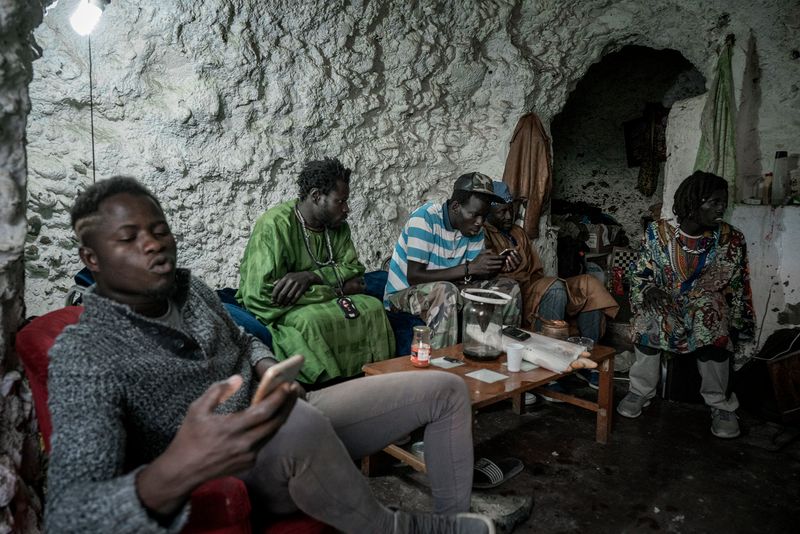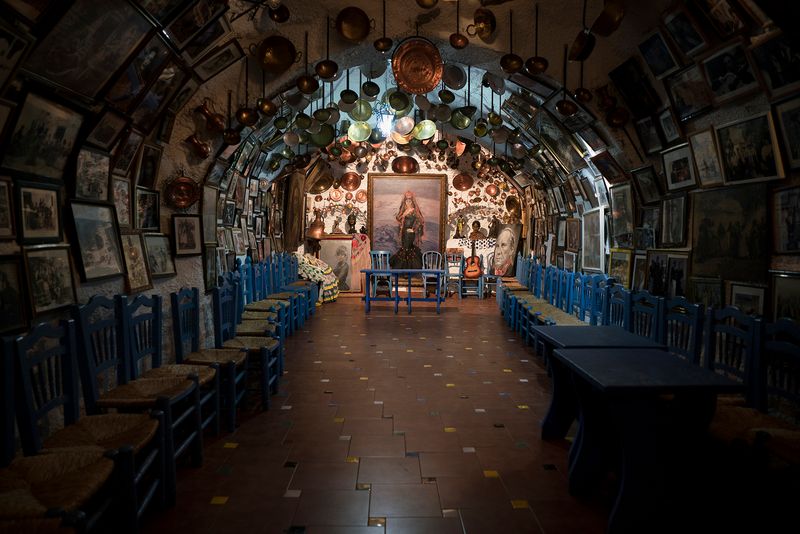Underland
-
Dates2015 - Ongoing
-
Author
-
Recognition
-
Recognition
The caves have been the residence most used by men since prehistoric times. In the Paleolithic age, humans used natural caves as shelters, but in the Neolithic times they started to dig them in the stone or the earth to build houses. This is linked with certain climatic and geological conditions and with economic, historic and socio-cultural factors. The security and isolation that prehistoric populations found in these primitive natural shelters is still being used today by numerous troglodyte communities and nowadays there are over 60 million people living in caves around the world.
I have already documented two troglodyte communities in two different countries, which are presented on the pictures I’m sending along with the grant proposal. The first ten pictures (01 -10) belong to Coober Pedy, a town located in the southern Australian outback that inhabits a subterranean culture, in which the majority of the population searches for the great wealth of opal, a valuable gemstone worth millions of dollars. This is an unconventional town where most of the inhabitants live in underground houses called dugouts. The next ten pictures (11 – 20) belong to Andalucía, Spain where people have been living in caves for more than 500 years in different towns and cities along the state. Cave building in southern Spain started when the Arabs Muslims brought the tradition with them from the troglodyte communities of North Africa and nowadays this is the biggest cave settlement in Europe.
The funds from the Grant will be used to document the Tarahumaras indigenes community living in caves in northern Mexico. They are located in Barrancas del Cobre in the Sierra Madre mountain range in the state of Chihuahua. The Tarahumara people currently occupy a quarter of the territory and due to the occupation of this population for centuries, this mountain range is also known as Sierra Tarahumara. The Tarahumara people came from Mongolia crossing the Bering Strait about fifteen thousand years ago, but it was not until 1606 that the Spaniards displaced them from the lowlands towards the most remote forests and ravines of the Sierra Madre. As a consequence a big part of the community found shelter in caves that has been the home of many generations of Tarahumaras, who realized the stone walls protected them from strong winds and rain and prevented the entry of animals. This forced them to live isolated, and helped them conserve their culture and develop a unique religious syncretism that still exists and is unique in Mexico for its mixture of Catholicism and shamanism. The Tarahumara community maintains their ancestral culture and language intact, wear traditional clothes and dedicate themselves to local crafts. I will document the lifestyle, culture, and religious ceremonies of the Tarahumaras that still live in caves. This new chapter will follow the same methodology of work and visual narrative already developed with the previous two chapters.
“Underland” aims to illustrate the human condition and the important relationship between human beings and the environment in which they choose to live. All human beings inhabit the world in different ways, and the environment that surrounds them affects and shapes their lifestyle. While I have developed the first two chapters of this project on my own, I would like to work with an anthropologist to develop the rest of it. This will allow me to have access to specialized information and find the anthropologist reason why modern communities choose to live underground nowadays and therefor give global importance to this story.
